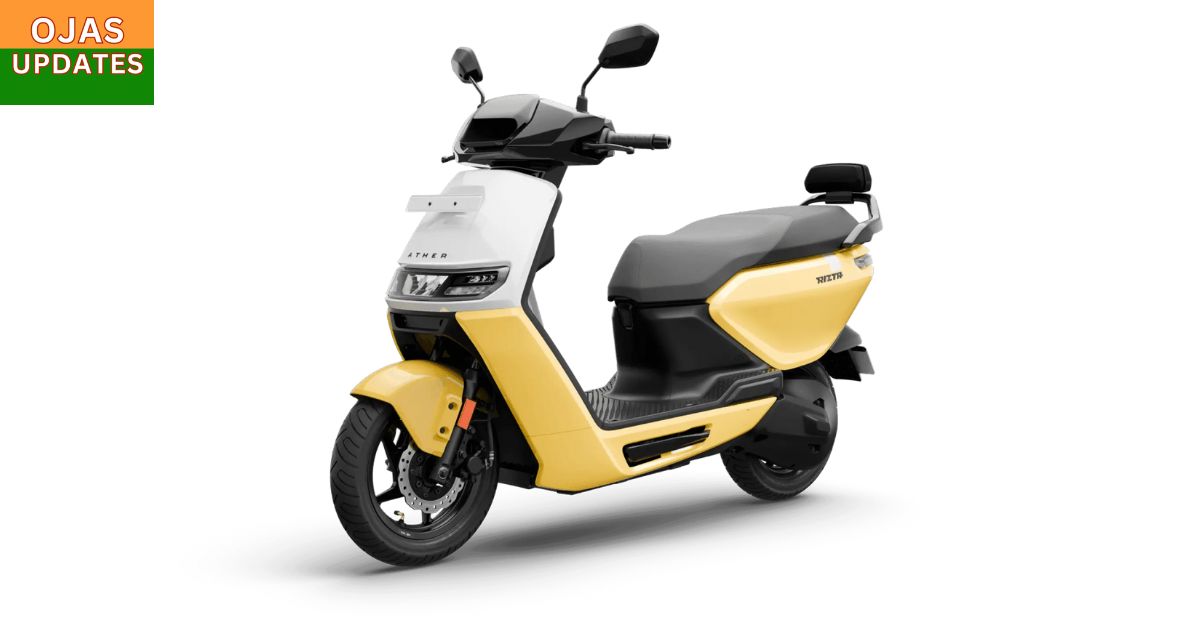Electric two-wheelers (e-scooters) are quickly becoming synonymous with smart, eco-friendly urban mobility. Yet, one lingering question often holds back mainstream adoption: the steep upfront cost. Enter Ather Energy’s Battery-as-a-Service (BaaS) model—a bold, transformative move that not only reduces purchase barriers but also redefines the economics of EV ownership in India.
What Is the BaaS Model—and Why It Matters
Launched in mid‑August 2025, Ather’s BaaS model lets customers purchase the Ather Rizta and 450 Series scooters at sharply reduced upfront prices—₹75,999 and ₹84,341 (ex-showroom, Lucknow), respectively—since the battery cost is taken out of the equation. The battery, which typically makes up 30–40% of an EV’s cost, is instead paid for via a flexible, usage-based plan: Re. 1 per kilometer, with a 48-month contract and a minimum of 1,000 km/month.
This model dramatically lowers the upfront entry barrier, making Ather’s high-tech scooters much more accessible to budget-conscious buyers—and potentially disruptive to the broader two-wheeler market.
Beyond Affordability: Added Benefits
Ather doesn’t stop at just lowering the sticker price. The BaaS package includes several value-driven enhancements:
- One year of free fast charging at over 3,300 Ather Grid stations nationwide.
- Assured Buyback Programme, now expanded beyond its initial pilot, guaranteeing up to 60% of the scooter’s value after 3 years, and 50% after 4 years, subject to usage.
- Extended Comprehensive Warranty (ECW) covering the battery plus 11 other critical components (e.g., motor, dashboard, charger) for up to 5 years or 60,000 km.
These initiatives together address three primary concerns for prospective EV buyers:
- Upfront cost,
- Resale value, and
- Long-term maintenance and warranty coverage.
Strategic Timing and Broader Context
Ather introduced BaaS as part of a wider launch on August 14, 2025, alongside its Assured Buyback and ECW offers. This move aligns with its broader strategy:
- Retail expansion: Aiming to nearly double its retail network—from 351 centres (as of March 2025) to 700 by FY2026—with a focus on North, East, and West India.
- Financial improvement: In Q1 FY2026 (quarter ended June 30), Ather nearly tripled operating revenue to approximately ₹645 crore, while narrowing its net loss.
- Product innovation: It’s preparing to unveil a cost-efficient EL platform, next-gen fast chargers, and its software updates with Ather Stack 7.0 at its Community Day event in August.
Together, these efforts reinforce Ather’s ambition to stay competitive, innovative, and widely accessible.
What It Means for Consumers—and Ather’s Future
For Urban Commuters and First-Time EV Buyers
- Affordability: With a lower entry cost and manageable subscription structure, Ather’s scooters become more comparable to popular petrol models on cost—a game-changer.
- Predictable Costs: Usage-based billing and extended warranty mean reduced financial surprises and clearer ownership planning.
- Convenience: Access to Ather’s fast-charging network further builds peace of mind.
For Ather Energy
- Higher Sales Potential: The pricing strategy could open doors with new customer segments.
- Recurring Revenue: Monthly battery payments ensure steady cash flow.
- Data Advantage: Retaining battery ownership allows Ather to glean usage insights, optimize battery lifecycle management, and enhance future product design.
Industry Impact
Ather’s BaaS plays like a well-timed disruptor. It signals that affordability need not come at the expense of technology or quality. As noted by market analysts, Ather previously held around 11% of India’s EV two-wheeler market, trailing behind Ola, TVS, and Bajaj. This strategy could shift that balance.
In Summary
Ather Energy’s Battery-as-a-Service model is far more than a pricing tweak—it’s a holistic, customer-first reinvention of EV ownership in India. By minimizing the initial cost, securing resale value, and offering long-term protection—all while expanding its reach and enhancing its technology—Ather is laying the groundwork for accelerated adoption and sustainable growth.

